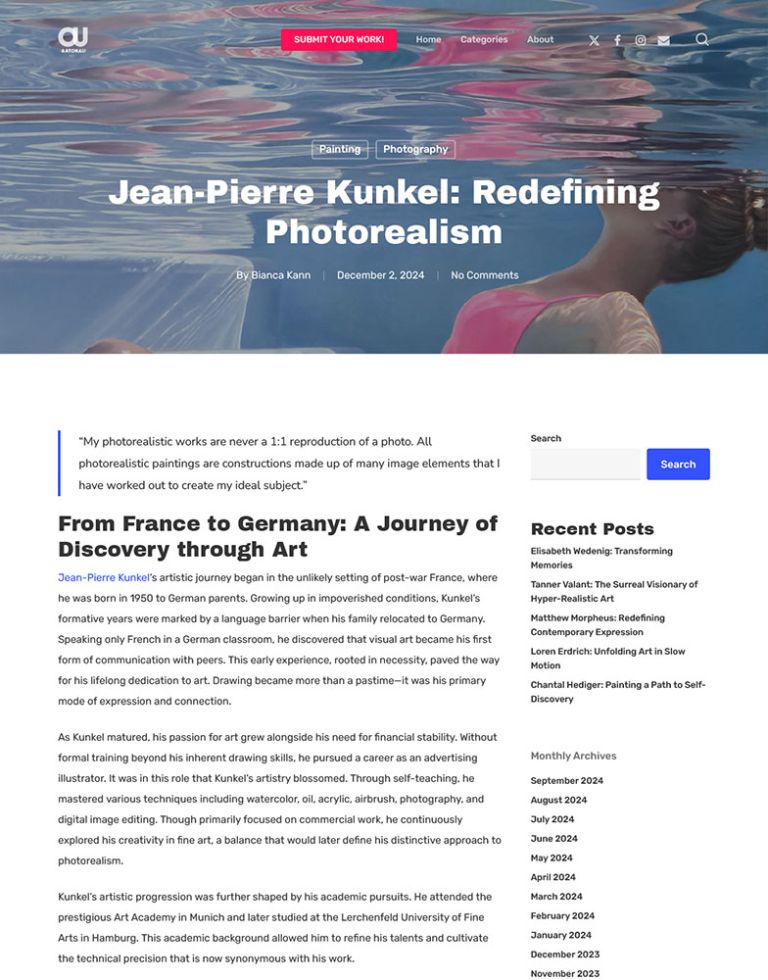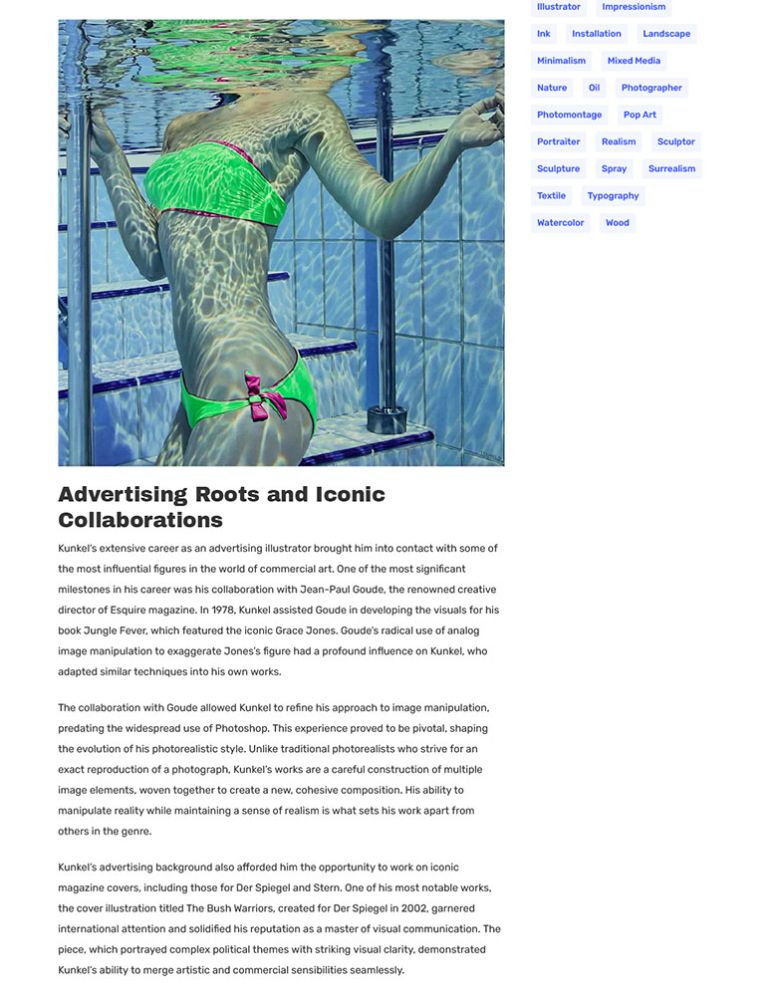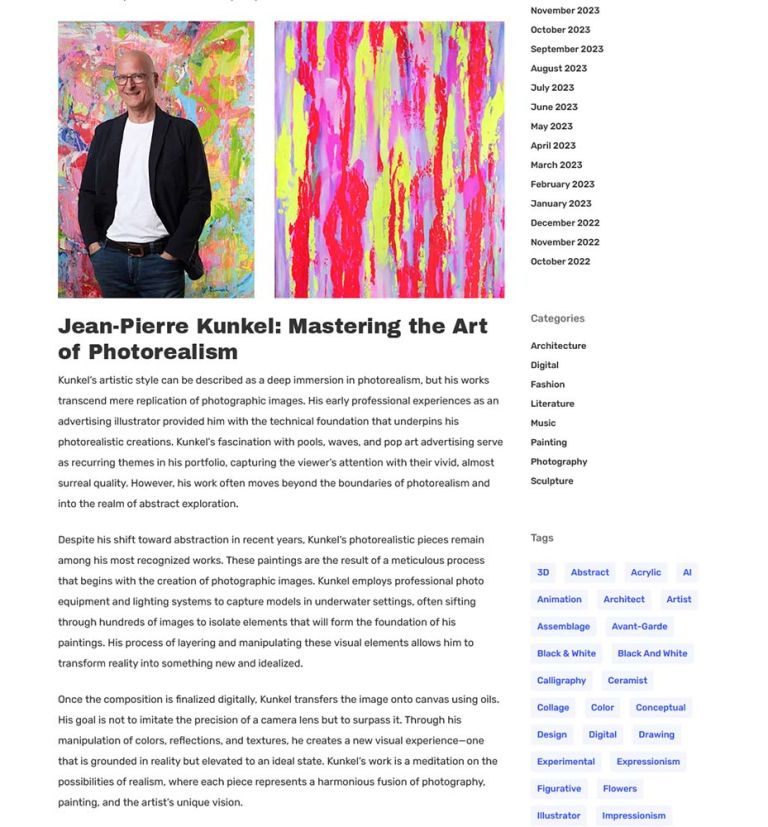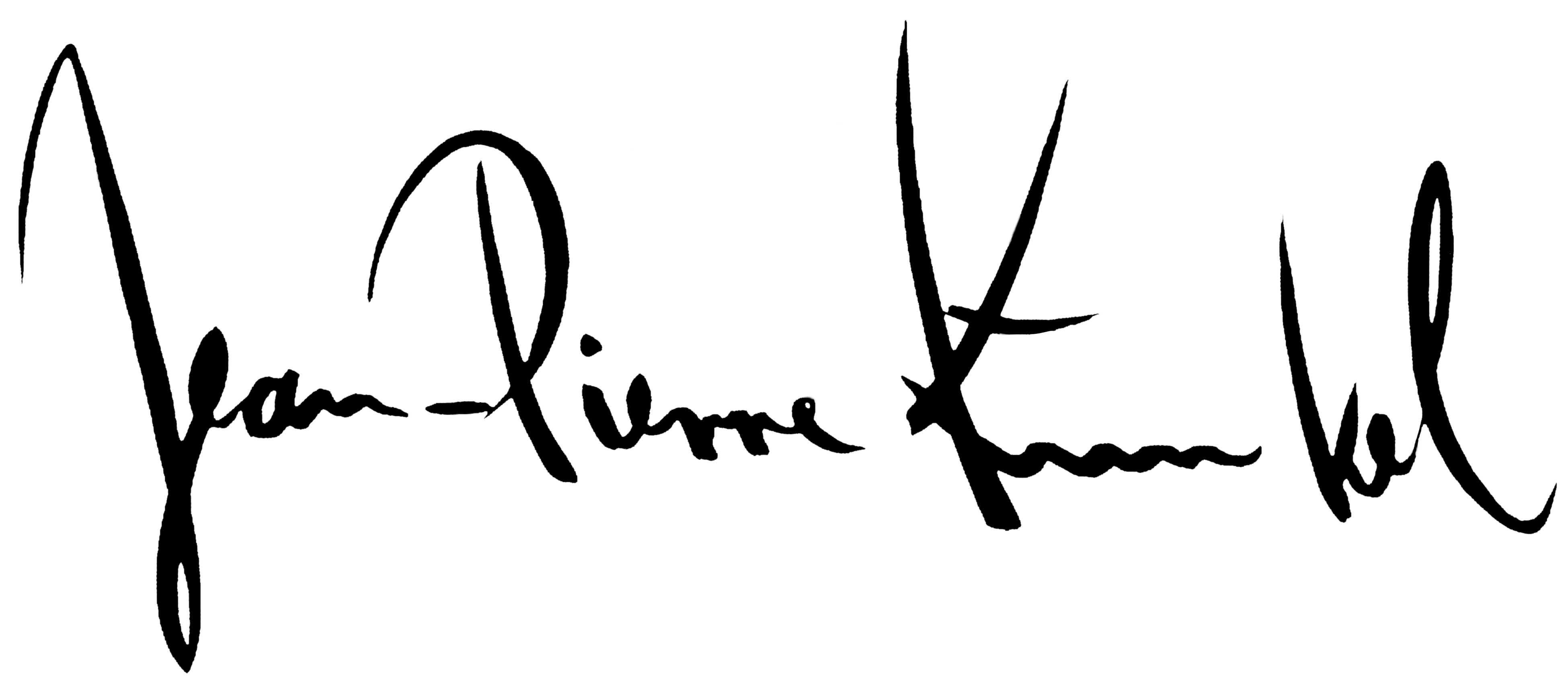ITSLIQUID – ARTIST OF THE MONTH – AUGUST 2024 WINNERS
ITSLIQUID - ARTIST OF THE MONTH - AUGUST 2024 WINNERS




“My photorealistic works are never a 1:1 reproduction of a photo. All photorealistic paintings are constructions made up of many image elements that I have worked out to create my ideal subject.”
From France to Germany: A Journey of Discovery through Art
Jean-Pierre Kunkel’s artistic journey began in the unlikely setting of post-war France, where he was born in 1950 to German parents. Growing up in impoverished conditions, Kunkel’s formative years were marked by a language barrier when his family relocated to Germany.
Speaking only French in a German classroom, he discovered that visual art became his first form of communication with peers. This early experience, rooted in necessity, paved the way for his lifelong dedication to art. Drawing became more than a pastime—it was his primary mode of expression and connection.
As Kunkel matured, his passion for art grew alongside his need for financial stability. Without formal training beyond his inherent drawing skills, he pursued a career as an advertising illustrator. It was in this role that Kunkel’s artistry blossomed. Through self-teaching, he mastered various techniques including watercolor, oil, acrylic, airbrush, photography, and digital image editing. Though primarily focused on commercial work, he continuously explored his creativity in fine art, a balance that would later define his distinctive approach to photorealism.
Kunkel’s artistic progression was further shaped by his academic pursuits. He attended the prestigious Art Academy in Munich and later studied at the Lerchenfeld University of Fine Arts in Hamburg. This academic background allowed him to refine his talents and cultivate the technical precision that is now synonymous with his work.
Jean-Pierre Kunkel: Mastering the Art of Photorealism
Kunkel’s artistic style can be described as a deep immersion in photorealism, but his works transcend mere replication of photographic images. His early professional experiences as an advertising illustrator provided him with the technical foundation that underpins his photorealistic creations. Kunkel’s fascination with pools, waves, and pop art advertising serve as recurring themes in his portfolio, capturing the viewer’s attention with their vivid, almost surreal quality. However, his work often moves beyond the boundaries of photorealism and into the realm of abstract exploration.
Despite his shift toward abstraction in recent years, Kunkel’s photorealistic pieces remain among his most recognized works. These paintings are the result of a meticulous process that begins with the creation of photographic images. Kunkel employs professional photo equipment and lighting systems to capture models in underwater settings, often sifting through hundreds of images to isolate elements that will form the foundation of his paintings. His process of layering and manipulating these visual elements allows him to transform reality into something new and idealized.
Once the composition is finalized digitally, Kunkel transfers the image onto canvas using oils.
His goal is not to imitate the precision of a camera lens but to surpass it. Through his manipulation of colors, reflections, and textures, he creates a new visual experience—one that is grounded in reality but elevated to an ideal state. Kunkel’s work is a meditation on the possibilities of realism, where each piece represents a harmonious fusion of photography, painting, and the artist’s unique vision.
Advertising Roots and Iconic Collaborations
Kunkel’s extensive career as an advertising illustrator brought him into contact with some of the most influential figures in the world of commercial art. One of the most significant milestones in his career was his collaboration with Jean-Paul Goude, the renowned creative director of Esquire magazine. In 1978, Kunkel assisted Goude in developing the visuals for his book Jungle Fever, which featured the iconic Grace Jones. Goude’s radical use of analog image manipulation to exaggerate Jones’s figure had a profound influence on Kunkel, who adapted similar techniques into his own works.
The collaboration with Goude allowed Kunkel to refine his approach to image manipulation, predating the widespread use of Photoshop. This experience proved to be pivotal, shaping the evolution of his photorealistic style. Unlike traditional photorealists who strive for an exact reproduction of a photograph, Kunkel’s works are a careful construction of multiple image elements, woven together to create a new, cohesive composition. His ability to manipulate reality while maintaining a sense of realism is what sets his work apart from others in the genre.
Kunkel’s advertising background also afforded him the opportunity to work on iconic magazine covers, including those for Der Spiegel and Stern. One of his most notable works, the cover illustration titled The Bush Warriors, created for Der Spiegel in 2002, garnered international attention and solidified his reputation as a master of visual communication. The piece, which portrayed complex political themes with striking visual clarity, demonstrated Kunkel’s ability to merge artistic and commercial sensibilities seamlessly.
Jean-Pierre Kunkel: Crafting Reality through Color and Light
Kunkel’s artistic process is as methodical as it is imaginative. His Hamburg studio is a testament to his need for both space and solitude. Filled with professional photography equipment, compressors, airbrush tools, and an array of paints, the studio functions as a laboratory where Kunkel can experiment and perfect his craft. It is here, away from distractions, that he fully immerses himself in his work, often losing track of time as he manipulates light, color, and form.
For Kunkel, the creation of a painting is a deeply personal process, one that requires precision and patience. Each step, from the initial concept to the final brushstroke, is designed to bring his vision to life. His mastery of color and light allows him to create paintings that feel alive, capturing fleeting moments with an intensity that photography alone could never achieve.
Whether he is painting the reflections of water in a pool or the intricate textures of a model’s skin, Kunkel’s works are a celebration of visual possibilities.
Despite his achievements in photorealism, Kunkel’s recent exploration into abstract art signals a new direction in his career. While his photorealistic works are known for their technical perfection, his abstract pieces allow him to push the boundaries of form and composition in ways that feel less constrained by reality. This shift reflects Kunkel’s desire to continue evolving as an artist, always seeking new ways to express his unique vision.
Through both realism and abstraction, Jean-Pierre Kunkel remains committed to exploring the depths of visual representation, forever challenging the limits of what can be achieved through art.

